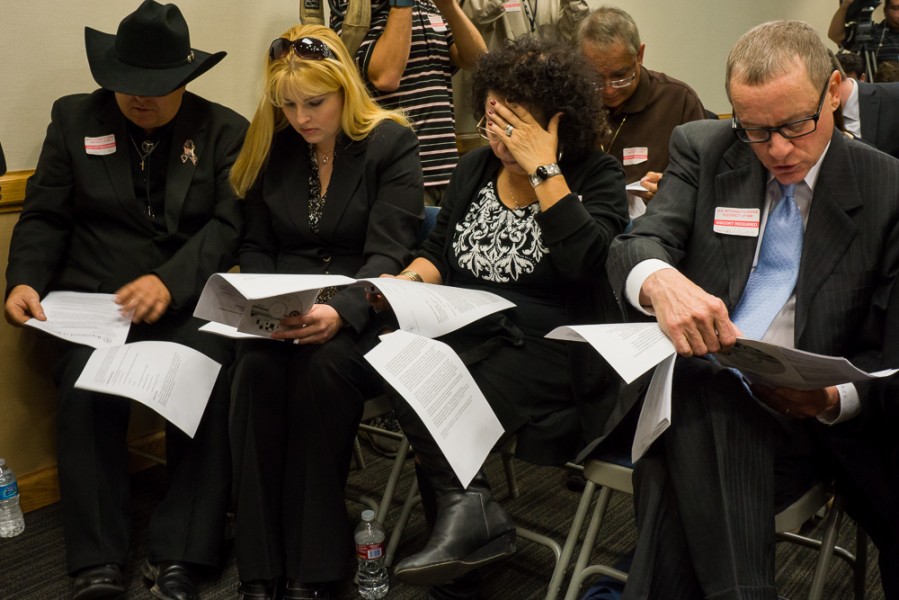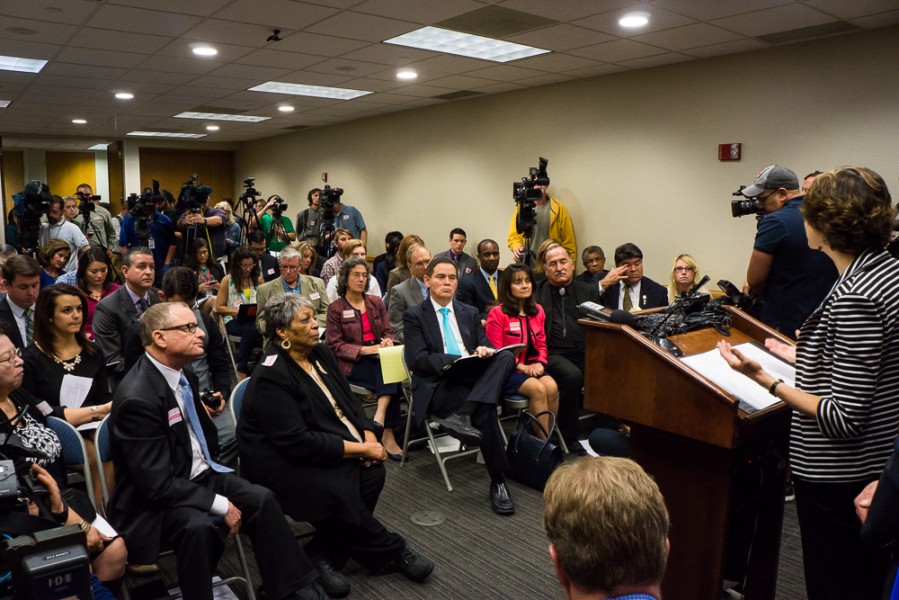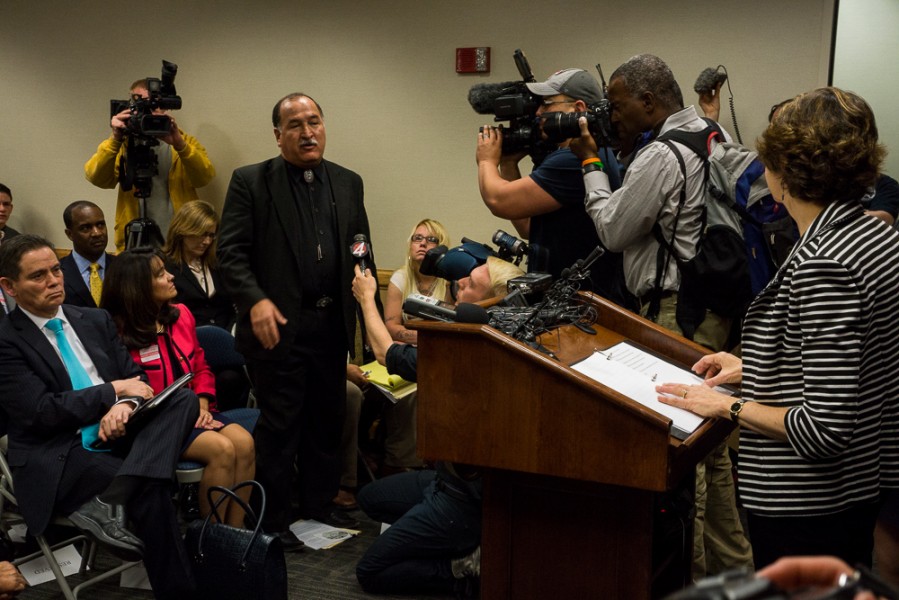Tags
Related Posts
Share This
DOJ Releases APD Findings
In an April 10 press conference held at the Department of Justice in Albuquerque, Acting Assisting US Attorney General Jocelyn Samuels released the DOJ’s findings in its investigation of the Albuquerque Police Department’s use of excessive and often lethal force against civilians.
The 46-page report details specific cases involving the APD in which officers used deadly and unnecessary force. Their findings are as follows:
• Officers too frequently use deadly force against people who pose a minimal threat in situations where the conduct of the officers heightens the danger and contributes to the need to use force.
• Officers use less lethal force, including Tasers, on people who are passively resisting, non-threatening, observably unable to comply with orders, or pose only a minimal threat to the officers.
• Encounters between Albuquerque Police Officers and persons with mental illnesses and crisis too frequently result in use of force or a higher level of force than necessary.
The report also cited a series of systemic deficiencies including the APD’s internal accountability system as well as a “broken civilian oversight process.” The remedial measures listed in the report meant to address said deficiencies fall into eight categories: Use of Force Policies, Interacting with Individuals with Mental Illnesses and other Disabilities, Tactical Units, training, Internal Investigations and Civilian Complaints, Management and Supervision, Recruitment and Selection and Community Policing and Oversight.
The Albuquerque Police Department has been involved in 36 shootings since 2010, 23 of them fatal. The Justice Department began their investigation on Nov. 27, 2012 led by the Civil Rights Division and the United States Attorney’s Office for the District of New Mexico. Public outcry has increased in the last month following two fatal shootings, particularly that of homeless man James Boyd on March 16, inspiring several protests.
Samuels claimed the cost of lawsuits towards the police department has had an impact on taxpayers but the newly-published reforms will only aid the situation, although no estimate of the cost was provided.
The Justice Department’s investigation “did not assess whether any conduct violated criminal laws,” and “specific cases have been referred to the Criminal Section of the Civil Rights Division for consideration.” The findings also examined the broad policies that “encourage abuse” and “allows officers to conceal uses of force that should ordinarily be reported. As for the criminal investigation, Samuels did not have an estimate for its timeframe.
“I know that our criminal section, like our special litigation section that conducted this civil investigation, wants to do a thorough job to ensure that it has considered all the facts and applied the law in appropriate ways so we’ll take the time that’s necessary to do that,” she said.
The entire letter with the DOJ’s findings can be read here.











 Jackalope Magazine is the student magazine of Santa Fe University of Art and Design. Building on the interdisciplinary nature of our education, we aim to showcase the talent of our university and character of our city.
Jackalope Magazine is the student magazine of Santa Fe University of Art and Design. Building on the interdisciplinary nature of our education, we aim to showcase the talent of our university and character of our city.
Recent Comments